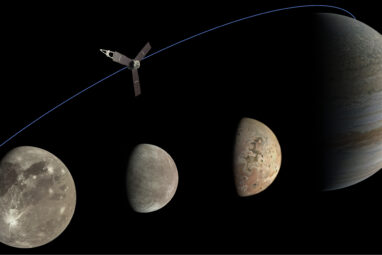The very first cells obtained their energy from geochemical reactions. LMU researchers have now managed to recreate this ancient metabolic...
The NASA New Horizons spacecraft’s extensive observations of Lyman-alpha emissions have resulted in the first-ever map from the galaxy at...
Astronomers have discovered a previously unknown birthplace of some of the universe’s rarest elements: a giant flare unleashed by a...
Stars in the Milky Way tend to form in families, with similar stars springing to life in roughly the same...
New data from the agency’s Jovian orbiter sheds light on the fierce winds and cyclones of the gas giant’s northern...
The largest sample of galaxy groups ever detected has been presented by a team of international astronomers using data from...
For decades, scientists believed Vesta, one of the largest objects in our solar system’s asteroid belt, wasn’t just an asteroid...
The detection of life beyond Earth would be one of the most profound discoveries in the history of science. The...
A whistleblower at the National Labor Relations Board reported an unusual spike in potentially sensitive data flowing out of the...
For scientists who want to learn about the geological history of a planet, river deltas are a great place to...
With the most powerful radio telescope in the southern hemisphere, we have observed a twinkling star and discovered an abundance...
An international team of astronomers has solved one of the longstanding cosmic mysteries by uncovering direct evidence of a massive,...







